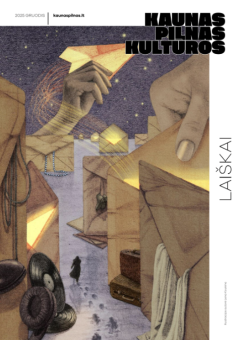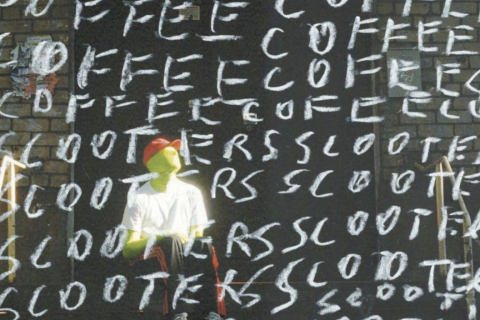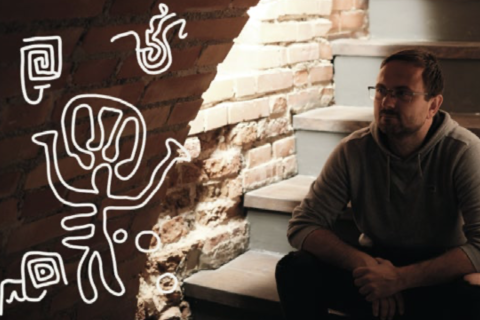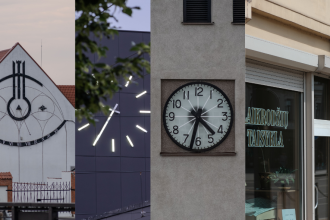After spending twenty years in the marketing departments of various corporations and witnessing more than one story of a modern-day Icarus, today Laimonas Užomeckis lives primarily for himself. He enjoys slow mornings, good coffee, and quality time with his twelve-year-old son, whose interests include gastronomy. The most important rituals are followed by meeting a group of new acquaintances and spending three, four, or sometimes more hours uncovering, zooming in, and recognizing the ever-new details of Kaunas.
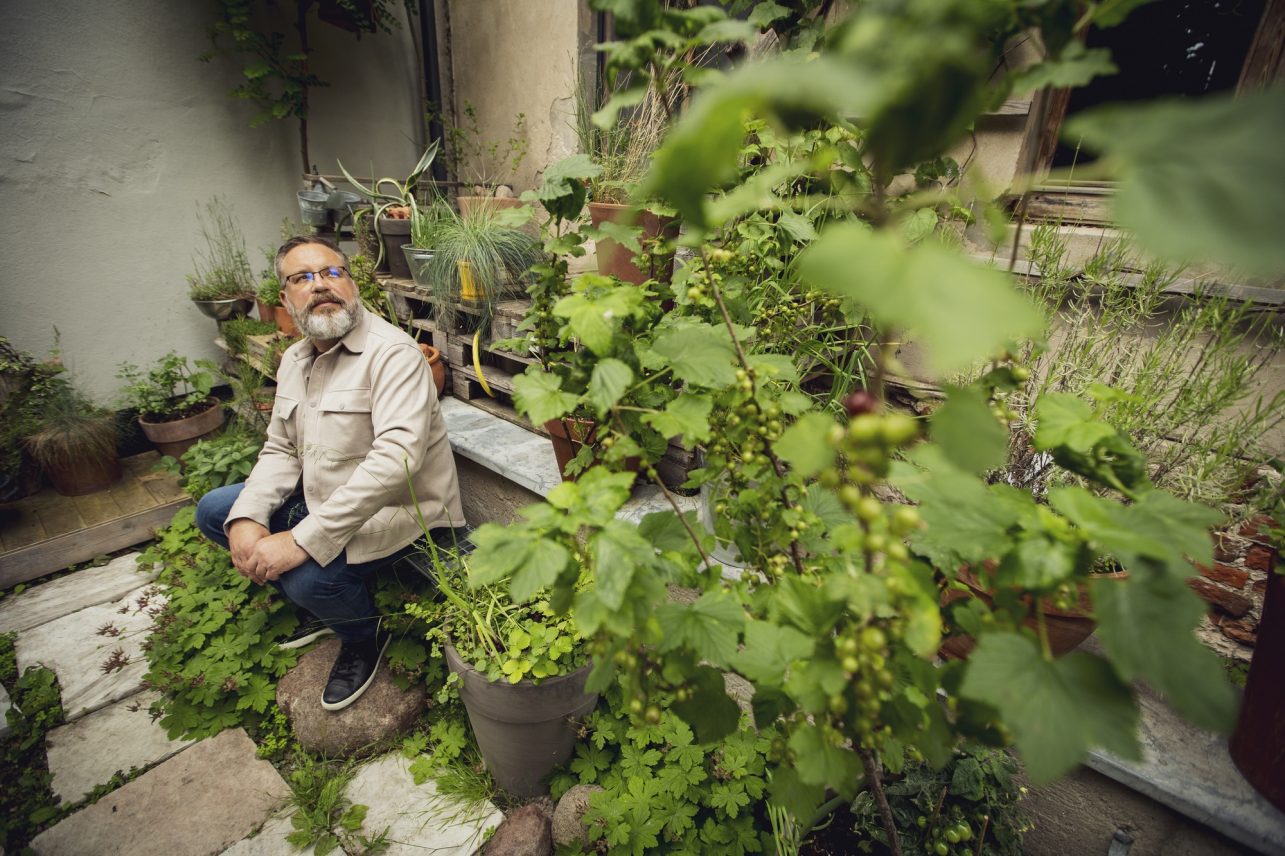
Work experience comes in handy
Kauno detalės (Kaunas Details) is the name of the Facebook page Laimonas created five years ago. Initially, it was a closed group of friends where he shared discoveries and stories about his hometown – its buildings and people. A natural passion for travel and storytelling “just for friends” and Facebook followers (he was happy to reach a thousand at first, now he has nearly twenty times more) quickly evolved into an official tour guide license. And thus, a new profession.
Of course, his experience in marketing helps him organize and refine his new “products” – the tours, social media texts, and video stories. It’s no surprise that you must register for a walk well in advance – there are certainly no spots left on the same day. One real estate developer even includes a gift voucher for a Kaunas Details tour when purchasing an apartment in Žaliakalnis – just so you know what kind of place you’re moving into.
I’m a fan and tester of tour formats – I often try out new guides and routes, so I can clearly pinpoint what makes one guide better than another. Laimonas has several strengths, and one of them is physical: his voice. Gentle, low-pitched, marked by clear enunciation and respect for the spoken word. It turns out that back in the tenth grade, the Kaunas native got a job at the independent radio station Titanika, alongside Ramūnas Zilnys, who was interviewed in this magazine last year. Later came a wild ride on the airwaves of the Ultra Vires radio station, and eventually, a retail chain – still operating today – snatched him up. But enough about that career for now. Laimonas, I, and two cups of black coffee are delving into the secrets of tour magic.
Doctors come to rest
I admit that at the end of last October, during a Kaunas Details tour of the Eiguliai cemetery, I recognized a doctor I had visited in the past. Laimonas laughs, saying that there’s at least one doctor – sometimes several – on almost every walk, “They come by departments, and often more than once on the same route.” Indeed, after a string of on-calls or just a tough workweek, a radically different kind of leisure time is a perfect way to unwind. Helping to redirect the mind are both the tone of the guide’s voice, which I’ve already mentioned, and his tour-leading style: calm, with a touch of humor. Indeed, word-of-mouth remains the most effective marketing tool.
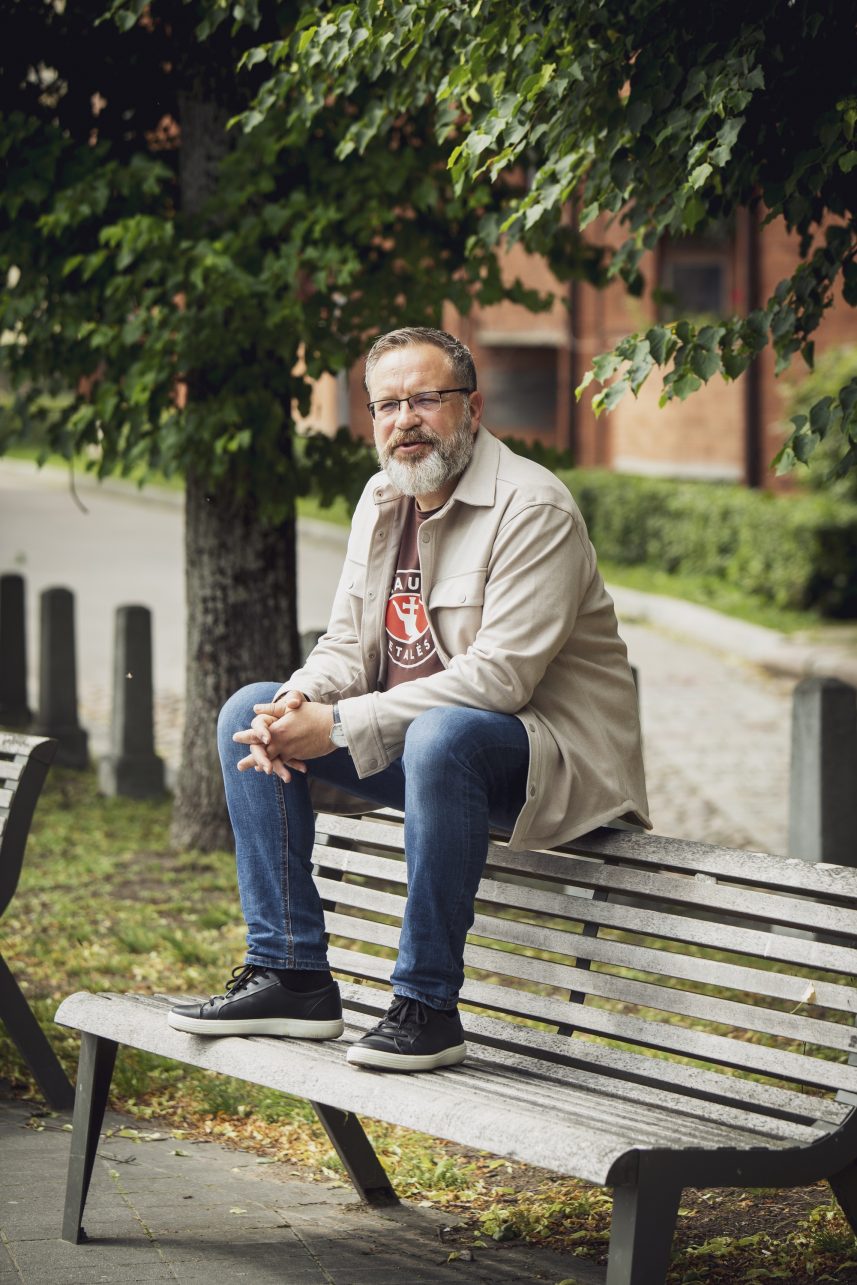
“There is an organization called Niekieno vaikai (Nobody’s Children). I created a special free tour just for its volunteers, so they could relax. We used to walk around the parks of Kaunas,” Laimonas says. Both these and other visitors on his tours thank him for the peace and quiet when they reach the finish line and admit to forgetting to look at their watches. Some would like to keep going!
Suitable for introverts
The Kaunas Details tour groups are kept small so everyone can feel comfortable. This year, Laimonas invested in special headphones and a microphone for himself, allowing him to maintain the calm tone his audience has come to appreciate. At the same time, participants can keep whatever distance suits them – no elbowing necessary. “Now they can hear me within a 150-meter radius,” he says with a smile.
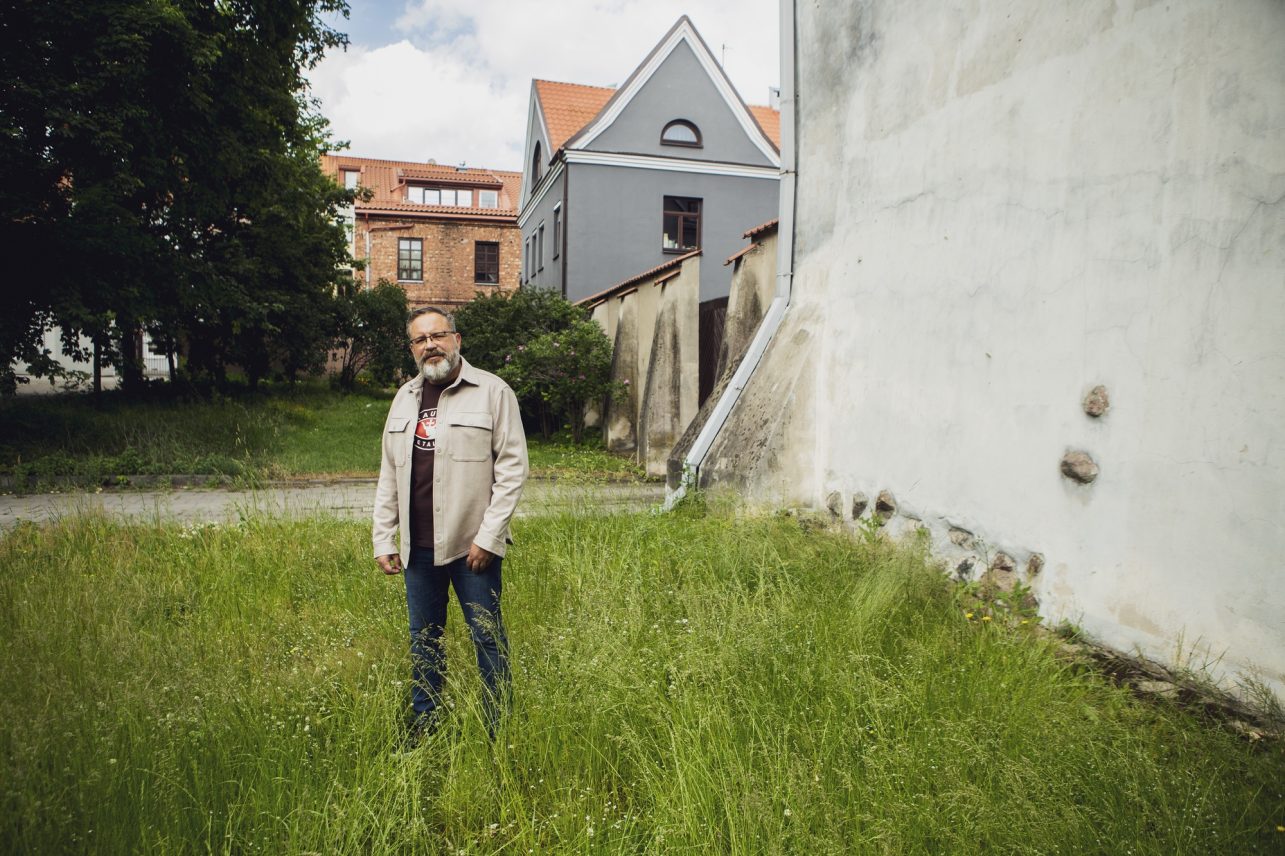
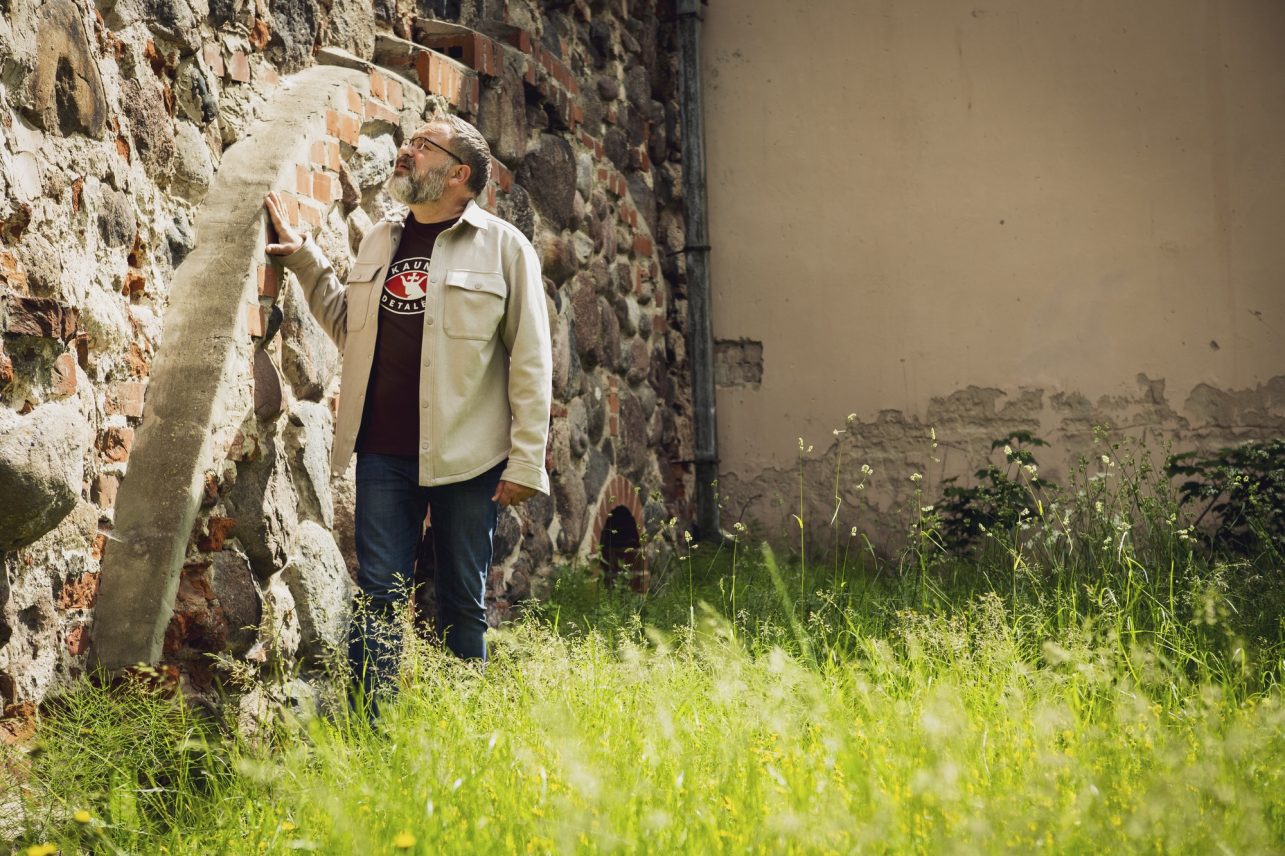
Having already tested the innovation, I agree that it makes sense, after all, the name of the initiative suggests that it will take time to explore new discoveries. The windowsills, the types of flowers, the shape of the stairs and windows, the color of the walls, cats and the dogs – even when you walk down a familiar street in the city center (and go into every possible courtyard) with Laimonas, the city speaks to you in a different way, more intimately, and demands more attention from you.
I say “speaks” because Laimonas’ walks are truly human. Some guides reveal the city through street art, others through layers of history – but in Laimonas’ storytelling, it’s the residents, builders, and creators – unique personalities – who take center stage. As he tells stories of who did what, where, and when, he weaves entire novels – even sagas – that stretch into the present day. I’m not exaggerating. For example, when passing by the Sugihara House, you’ll learn that the architect of the villa, Juozas Milvydas – a participant in the June Uprising – has a granddaughter, Marija Drėmaitė, an architectural historian and professor who helped bring Kaunas modernism to the UNESCO World Heritage list. And that’s just one of many details that may no longer fit in your head by the end of the tour. That is also why you’ll want to come back and spend another three or four hours all over again.
Intertwining routes
You might spot Laimonas and his groups wandering around the courtyards of the city center, the streets of Žaliakalnis, in Šančiai or “on the other side” – in Linksmadvaris, which, if not for World War II, could have become just as attractive a district as Žaliakalnis. They also can be spotted in cemeteries.
He prepares for his tours daily, and even for well-known routes, he continually adds new facts. First and foremost, he reads books. He says he’s collected nearly all that have been written on the subject. Although others encourage him to write his own, he says he’s not yet ready to become an author. When asked which books from his personal shelf dedicated to Kaunas left the biggest impression on him, Laimonas says that Raimundas Samulevičius’ essay “Balta obelis” (The White Apple Tree) about his uncle, painter Antanas Samuolis, was “like a movie.” What stunned him most were the diaries of the Kaunas ghetto police.
He also enjoys chatting with the locals while walking potential future routes – not everyone opens up right away, but with his gentle persuasion, Laimonas eventually wins them over. His credibility is further strengthened by the fact that he collaborates with the media, making him recognizable even to those who haven’t joined his tours. His video stories have been published by Kauno diena. Often, locals join the walks too – at those times, he says he worries about mixing something up, but it’s always a joy when, by the end of the tour, he can add new facts to his future storytelling.
Coming soon: this autumn, a television film titled Miręs Kaunas (Dead Kaunas) will be released, exploring the stories that can be found aplenty in Petrašiūnai cemetery. There are just as many in Eigulių cemetery, where Laimonas opens the family albums of veterinarians, pilots, deportees, Righteous Among the Nations, the Čiurlionis family, circus artists, and many other, more or less known families.
Visiting Sofija
“With Balys Sruoga,” Laimonas answers without blinking when asked which historical Kaunas resident he would most like to meet for coffee or lunch. Because Sruoga was everywhere, he was a well-read and courageous person. My interviewee begins to fantasize about speeding through the streets of the temporary capital in Sruoga’s Fiat, sitting down for a drink in the City Garden with theater folk, and stopping by Konradas’ Café, where Sruoga might introduce him to his best friend, Vincas Krėvė-Mickevičius.
“I would love to see the garden he tended, the homestead that today houses a museum. But the most fascinating part would be attending one of the Saturday teas organized by Sofija Čiurlionienė. I think those were magical events. There, I would listen to Salomėja Nėris, Vincas Mykolaitis-Putinas, Vydūnas, Vaižgantas, and Sruoga’s translations from foreign languages, the discussions… and I’d have a strong cup of coffee with Čiurlionienė. After all, she used to say: you have to drink good coffee, and lots of it,” Laimonas continues, admitting that the company of writers seems the most appealing to him unlike, say, military officers, who look great in surviving photographs but, after reading more about the twists of history, lose some of their charm.
Inspirations from the Past
When, during our conversation, he admitted to admiring the multifaceted nature, dedication, and productivity of the interwar period Kaunas residents, when doctors still managed to be writers and public figures, I dared to call Laimonas a continuer of that tradition. Having had the courage to change his profession in his forties, he does not confine himself to the dry teaching of facts but infects us with a virus of curiosity and a love of the environment and history. Of course, the guide remains modest, “My mission is to preserve history. All those people will stay alive as long as we speak about them, tell their stories, write books, and make films.”
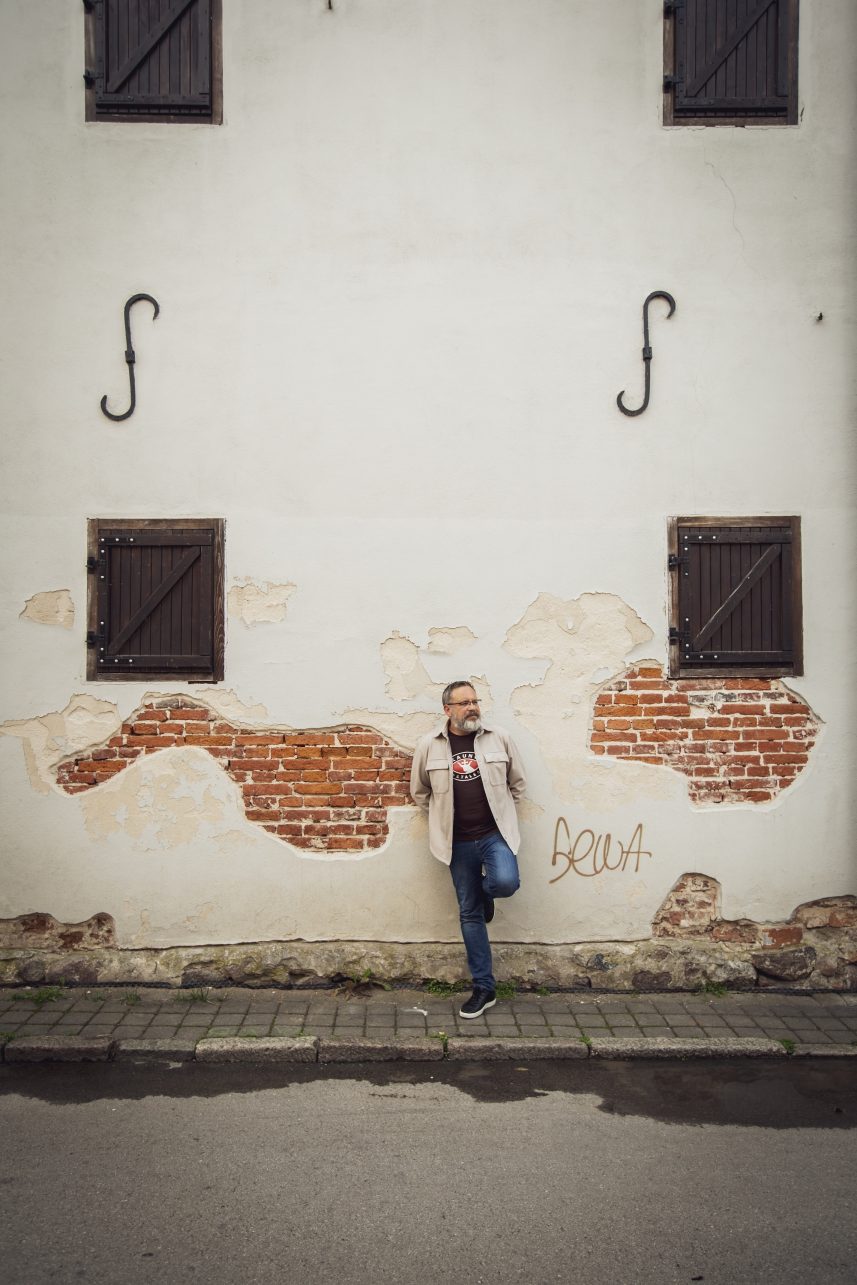
An hour slips by unnoticed while talking with Laimonas, and he still isn’t in a hurry. He even admits he doesn’t own a smartwatch and doesn’t check how many steps he takes while preparing for and leading tours. Unfashionable? Maybe – but genuine.
P. S. Laimonas has a tip especially for Kaunas Full of Culture readers who want to slow down their daily pace and increase the number of impressions: Step out of your car. If you’re using public transport, get off two stops earlier. Try reaching work by a different route each day. And try walking your favorite route at night – when the darkness allows an extra dose of details to emerge. Kaunas details.
